Winter Solstice + New Moon: The night of the goat
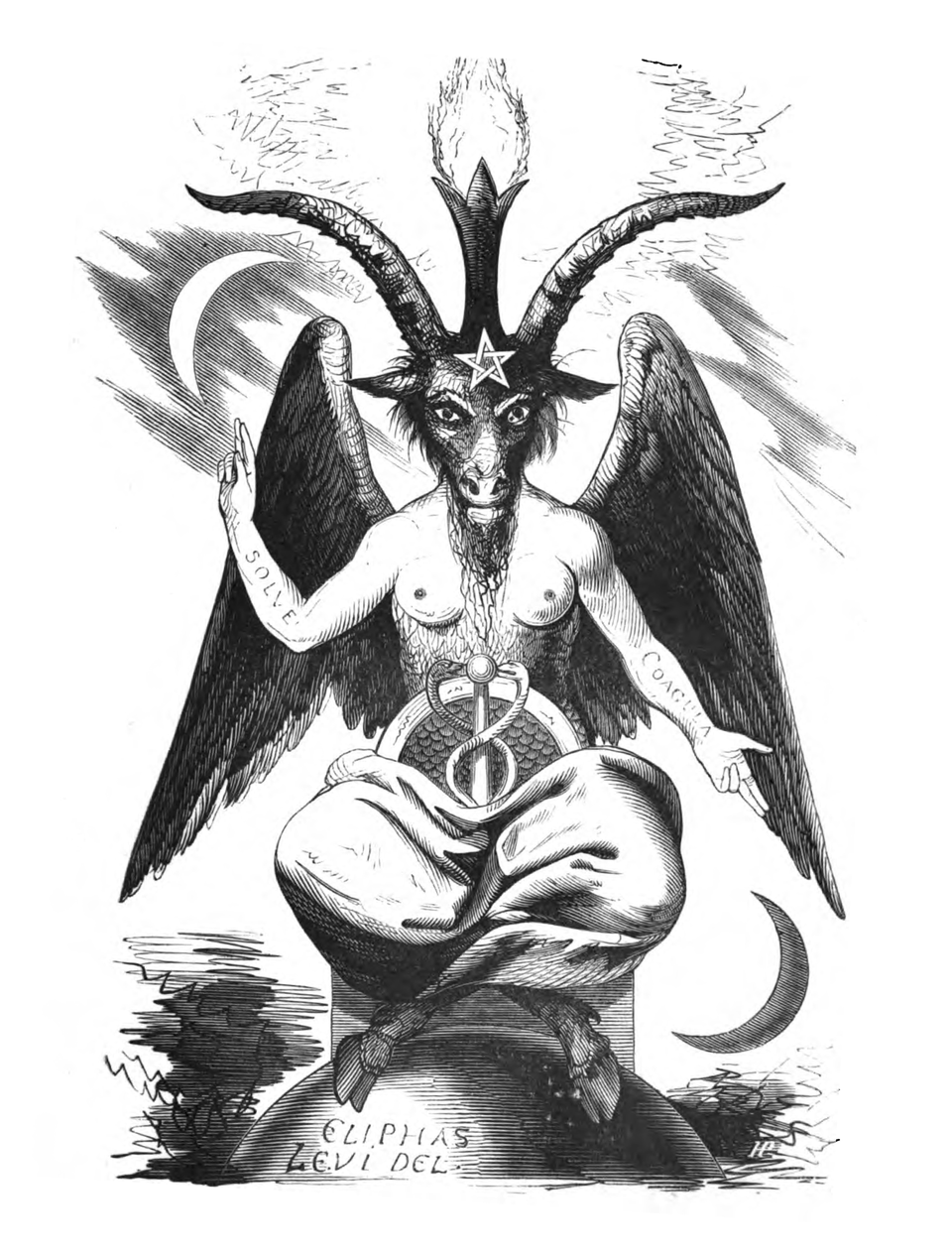
It's Friday. Hello. Depending on where you live, I hope you're able to stay warm and safe during the winter storm system and Arctic air mass that are collectively assaulting residents of about half the US states (and I assume also Canada) between now and tomorrow. I started writing this post early again because of how I wasn't sure whether I'd have an internet connection or electricity later, although I think odds are more than 50% in my favor. I live a little too far east to be affected anywhere near as badly as some people will be.
I feel lucky, and in that regard am fairly hopeful I can enjoy the Christmas holiday weekend. Whatever holidays you mark around this time of year, I wish you the best for those too. And yes, I do observe Christmas, as a cultural and familial habit — I just also observe the winter solstice in a more deliberately sacred way, as part of the solar Wheel of the Year. If the Wheel of the Year is an unfamiliar concept to you, Wikipedia has a not-amazing but rudimentally informative page that will at least give you some idea of what I'm referencing, but this very post will also break down and interrogate that concept to some extent, and future posts with a more closely pagan/animist focus will have more involved analysis or reflections.
In any case, when I observe the winter solstice, I personally prefer to give it the name Jól, from Old Norse and modern Icelandic, but it shares the same proto-Germanic root that gives us the Old English ġēol (and variants), which led to the modern English Yule, hence Yuletide, Yule log, and so on. Because of this relatively well-known etymology, it's often a matter of pop anthropology to claim that Christmas is itself based on a Germanic or at least northern European pagan folk holiday once observed on the winter solstice, then given Christian characteristics by the original Church in order to convince people they could keep their old customs and still turn to Jesus.
This is really not correct at all, and avoiding that mistake is one of several reasons why I distinguish between my Jól and my Christmas. However, I've found that in investigating the matter of historical pagan solstice observances (both summer and winter, but winter especially), truth is even stranger than fiction. The timing of Christmas might have pagan connections, just not the ones you'll see in the most common types of memes that pass around Facebook; what the Jól/Yule root concept refers to might not be a particular holiday at all, but pre-Christian Germanic peoples maybe did celebrate something relevant to the winter solstice or at least this rough time of year; as for the Celts, whose calendar is freely incorporated into the Wheel of the Year, direct evidence of solstice observations is scant, only slightly better than for equinoxes; notwithstanding the date of Christmas, Christmas traditions certainly still do incorporate pre-Christian traditions; and the glue that really ties together European and Euro-derived winter solstice holidays, or adjacent ones... is a phenomenon I best understand not as historical but thematic linkage — that of inversion, misrule, indulgent anarchy.
It is, in fact, the best holiday for me to explain more about why I very literally worship the Devil. And that's the real point of this post. But to get there, first I need to unpack everything I just said in the preceding paragraph. And if the read length warning at the top of this didn't already make it clear, this will be among my longer writings, but that's on purpose, as I've written this to share thoughts derived from two combined prompts: the winter solstice and the new moon.
Solstices & revels
As almost-always, nothing I have to say about historical cultural practices is likely to look too far beyond the geographic scope of the practices I've adapted for myself or been inherently influenced by. This isn't just because I only know so much, but because I'm still trying hard not to write didactically even when I'm explaining myself. I'm explaining myself and what I do. I don't believe it would be accurate or ethical for me to make generalizations about how all humans everywhere conduct their ritual lives, so I won't. But as I try to stay in my own lane, I therefore acknowledge that the cultures I'm dealing with here may not generate resonance for all readers. I absolutely encourage you to look up winter holiday information about other cultures from other writers who are better suited for those topics.
And, to a decent extent, everything I'm about to say is reduction and interpretation based on prior research which I'm not going to exhaustively cite here. If you do want a general idea of what I'm basing any of this upon, I will highly (and repeatedly through other posts) recommend the work of historian Ronald Hutton, especially my main reference, his book Pagan Britain. More recently I've also learned things from Norse mythology specialist Mathias Nordvig. In between these two figures are smatterings of general knowledge I've picked up over the years, along with the ways my own brain has dissected all of it. I'm writing half fact, half opinion, and I can only hope the opinion part is meaningful.
So — solstices. And some people observing them, or not.
What do I mean by the timing of Christmas possibly deriving from pagan practices, just not in a way linked to any Yule-identified pagan holiday? I mean that Christmas might fall on December 25th because of concurrent holiday observances not among the pagans whom Rome had been colonizing, but rather because of holidays belonging to pagan Romans themselves. Christianity wasn't the preferred religion of Rome until the 320s C.E., and before this point, it was established among early Church scholars that Jesus[1] was conceived by Mary on March 25th. Reckoning nine months later of course suggests those nascent Christians considered Jesus' birth to be December 25th, and later documentation shows this to be the case specifically as a matter of calculating his conception; interestingly, though, by 274 C.E. this would set his birthday on the same date as the Roman pagan festival of Sol Invictus, established that year by the emperor Aurelian as the leader of the Sol Invictus cult.
There are roughly five million scholarly perspectives available on the exact nature of the Sol Invictus cult, all debating whether this was a new sun god for Rome, an enhancement of the existing sun god, and so on. I don't think you'll find any of these scholars in total agreement about whether the early Church tried to take advantage of Jesus' determined birthday as a way to win over potential converts from Sol Invictus cultists. The fact of the matter is that Christians didn't care about Jesus' birthday very much at first, so converting Romans on the basis of celebrating something on December 25th seems a little strange since it would turn into a bait and switch, with the prototype versions of Easter and surrounding holidays proving far more significant. Early Christianity's mythology and political status also probably had more in common with the cult of Mithras[2] than with Sol Invictus, and Mithraists maybe cared much more about summertime observances. But it's not too much of a stretch to imagine that as Christianity became the religion of Rome right on the heels of the Sol Invictus craze, for some people the birthday of Jesus replacing Sol Invictus would feel fitting. It's also an entertaining coincidence, if perhaps only a coincidence, that according to the Julian calendar at that time, the winter solstice did fall on December 25th, although scientifically speaking it was happening a couple days earlier.
Speaking of the Julian calendar, many centuries later this solstice date would have slipped all the way to December 13th, which is the feast of St. Lucia and a decidedly solstice-like, Christmas-like holiday among the (significantly though not exclusively) Germanic cultures that observe it, and I've recently learned from a friend and subsequent reading that there are various scholarly speculations about St. Lucia's Day incorporating pagan winter solstice customs and folklore that may or may not have anything to do with Jól/Yule — but I'll get back to that sort of thing in just a bit. The Gregorian calendar stopped and corrected solstice slippage, among other issues like fixing New Year's Day as January 1st. I like this detail about New Year's Day very much because it speaks to the simultaneous situations of many people, ever since a certain point in Roman times, already celebrating January 1st as the New Year — and of many Christians for literal centuries not observing it as the New Year at all. The reason for this speaks, I think, to the deepest truth about Christmas as a "pagan holiday"...
... which is that New Year's Day, the Kalends of January, the festival of Janus, was an exceedingly popular holiday that spread throughout the Roman Empire and lingered after the empire's collapse, and had this nasty habit of not being very Christian, neither in its roots nor its customs. Attempts were made in the Church to observe things on January 1st like the circumcision of Jesus, but I think just about anybody can imagine why this wouldn't be nearly as exciting as carrying on the full-blown revelry of their parents, grandparents, and earlier generations. The customs associated with this revelry may or may not date back to imperial Rome, but at various points in European history leading from that time to the Renaissance and establishment of capitalism, historians can trace many distinct New Year traditions in Britain — these just being an example among various other cultures — like decorating homes with evergreens, holly, or mistletoe, and going door to door singing songs, and exchanging gifts, and getting rather drunk.
These things were, with time, clearly ported over to Christmas. I have no idea how deliberate this was, but if anyone did make intentional pushes to neutralize the influence of New Year festivities on good Christian hearts and souls, then certainly they had more success in transferring those activities to Christmas. Now a lot of us still celebrate the New Year with much revelry, and in many respects the New Year remains an ambiguously pagan vs. secular observance, but Christmas is New-Year-ified, and people remember less and less of the New Year as a folk holiday that gave us much of what we now identify and commercialize for a Christian holiday.
Ironically, all of these transplanted New Year's revels into the midst of Christmas were some of the things that deepened some historical Christians' dislike for Christmas itself. Even back then, various denominations or cultural trends made Christmas far less important than it is today, for decades or centuries at a time depending on where you were. A lot of Christians in England hated Christmas so much that they made it illegal for a while, and anti-New Year sentiment was so strong there that even after most other countries in Western Christendom[3] finally came back around to January 1st before the Gregorian calendar took effect — the English insisted on March 25th as the New Year, and they refused the Gregorian calendar, and this lasted until the early-mid 18th century. This affected the calendars of their Celtic colonial holdings and also reminds us that the culture of fun-hating anglo-exceptionalism is pathetically long-established.
All of this is, in a nutshell, what I see as the pagan influence on Christmas. As you can see, I haven't said a single thing about Jól or worshipping trees or Odin being a prototypical Father Christmas and/or Santa Claus. Nothing about solstice rituals at Stonehenge either. The thing about Roman-Christian colonial influence on other European pagan cultures is that by the time anyone was converting Germanic pagans to Christianity, the date of Christmas had already been set for centuries; Celtic native religion had been forcibly stamped out or appropriated by Roman pagans starting further back than the birth of Jesus himself; and I'm sure you find similar issues in other places, as for example today I found out that Lithuania remained fundamentally non-Christian into the 14th century, a staggering concept.
I do think it's reasonable to believe that Iron Age pagan beliefs and practices persisted for a while in supposedly Christian cultures on their own, and these beliefs and practices even still exist today. This is made evident by the preponderance of folklore and folk traditions in every Christianized culture that can't remotely be explained by adaptation of Christianity itself. In many ways these ambiguously pagan, decidedly animist tokens even syncretically wove themselves into local Christianities, thus for instance giving us the two stereotyped but equally "correct" and coexisting framings of the Irish as dedicated Catholics and the Irish as steadfast believers in fairies. Such latter cosmologies, typically maligned by both Christians and atheists as "superstitions," point to tantalizing origins in belief systems that are now not so much gone as transformed and marginalized. If you're going to try reconstructing a given culture's flavor of paganism, you might as well start with extant folk practices as much as with whatever did manage to get documented about the "original" practices, written by — almost universally — colonizing outsiders (sometimes centuries after Christian conversion had occurred with most of a populace).
The trouble with such early documentation, besides the biases and historical distance of the writers, is that especially when it comes to certain cultures, there isn't much information at all about their real beliefs or practices prior to Roman and/or Christian involvement. In some cases, there is plenty of information, but it doesn't align with what we now popularly believe. I think I've already touched on all of this before but it's important to bring up again in this particular context. As for Germanic festivals on the winter solstice, Jól might refer to a holiday that fell near the solstice but not necessarily on it; there is Christianized but early primary source documentation of something that might have used this name yet could have occurred anywhere between the middle of December and the middle of January (the latter curiously suggesting some connection to the Icelandic Þorrablót but it's again impossible to say). Although some association with Odin isn't out of the question, the holiday's purpose is opaque. It might not even have happened every year. Meanwhile, going back to St. Lucia's Day and its potential incorporation of earlier pagan traditions, as mentioned that date suggests a solstice association but the main pro-pagan-syncretism argument I've seen pointed to is not something about Jól but a goddess or spirit named Lussi.[4] Even on a raw etymological level, Jól and its linguistic relatives don't tell us anything useful; linguists can't agree on anything, and some argue the word just means something about a feast, begging the question of whether there is only one jól per year, or multiple.
So, while likely having no relevance to the development of Christmas, pre-Christian Germanic cultures probably marked a holiday positioned on or near the winter solstice, and it might as well be called Jól for lack of any clearly better alternatives, but that's most of what I can say with any confidence about "Yule" as a pagan designator. As unhelpful as that is, if we turn to the Celts — whose hypothetical holidays have been incorporated into the Wheel of the Year as much as if not more than Germanic cases — the situation is bleaker. I have never run across any credible source showing direct evidence of solstice observances, winter or summer, in any Celtic culture prior to contact with other cultures. This doesn't mean the Iron Age Celts didn't know what the solstices were; if they could build a portion of Stonehenge to mark either the midwinter sunset or the midsummer sunrise, along with other types of astronomical trackers in other structures, they certainly recognized solstices as phenomena, and nobody can fairly rule out that these dates might have held significance. But what these tribes would have called those dates or done for them is not described anywhere that I've found, unless I'm outright forgetting something. (The Wheel's cross-quarter days — the holidays falling on the 1st of November, February, May, and August — are represented far better.)
And yet, for all of the above considerations, I find immense value in making ritualistically merry on the winter solstice or thereabouts, and for that matter on the summer solstice too. This is for several reasons:
- Even if I can't trace pagan/animist solstice practices among my ancestors and cultural antecedents to any distinct thing before Christianization, and even if that lack of earlier evidence means we can't determine some sort of pan-European solstice rites (or pan-temperate, pan-polar, pan-Northern, etc.), a solstice is a self-evidently celebratory event in pre-industrial contexts. It would only make sense for farmers and hunter-gatherers alike to pay attention to the points when the lengthening or shortening of days "switches direction," with various pros and cons to ritually account for.
- Whether related or not, solstice or solstice-adjacent holidays always strike me as markedly unbridled, perhaps ecstatic more than fertile, devoted to excess: of energy, of calories, of activity. In the summer these frenzies account for being filled by the sun's maximal power, and in the winter they account for generating joy and communal bonds without the sun's assistance.
- Though I find the Wheel's cross-quarter days still full of excitement and conviviality, and therefore I won't lay too much emphasis on this next point, it does feel to me like those solar dates carry a greater aura of solemnity, deliberation, structure.
I can encompass all of the above under the concept of revelry, with as many debauched and orgiastic connotations applied as possible. And most importantly, considering the etymology of revelry in Old French revel, from the Latin rebello:
To rebel.
Dark carnivals & monarchs of misrule
I can't resist using the phrase "dark carnival" as an Insane Clown Posse joke, even though I've probably heard one single song of theirs in my life. But I think that of both solstices, the winter one truly qualifies as a dark carnival, not only happening largely in darkness but in letting darkness reign. In the whitened Western-colonial society where I live, darkness is typically maligned and hung with unfortunate racial implications, prominently in the case of discussing (spi)ritual things — how many times have you run into "black magic" as a phrase, used in contexts where people also disparagingly refer to "voodoo," and how often have you considered how awkward this is? Black magic, so called, is also alternately identified by some practitioners as the Left Hand Path (vs. the Right Hand Path's "white magic"), further identifying darkness with evil and the sinister, and shunned accordingly.
I'm not the right person to write an exhaustive treatise about how to best undo racism's effects on the language we use to describe magic or practice it in general, but let me at least say that I identify with the Left Hand Path as a) a pun about leftist politics, and b) elevating and unpacking things framed in Christian industrialized contexts as "evil." To that end, I love the history of European winter solstice holidays as times of radical social upheaval and inversion.
We see this starting at least as far back as one holiday I haven't discussed yet but is also Roman: Saturnalia, observed from December 17th to 23rd. Despite imagery of the god Saturn as old and inevitable Father Time, despite his Greek relative Kronos being a crank with a penchant for eating his own children, despite stereotypes of Saturn-ruled Capricorns as loathing parties — Saturnalia was archetypally revelrous and inversive/subversive. Arguably, it was preceded by its Greek equivalent of Kronia, whose details the Romans probably in typical fashion appropriated, but more people I know are familiar with Saturnalia already, and I'm not sure when Kronia took place. In at least this Roman context, the feast period is amply documented as a time for massively decadent gatherings where gag gifts were exchanged, typically-illegal gambling was permitted, slaves gave orders to their masters, and random individuals were appointed kings of their given party and entitled to make everyone else obey their commands regardless of status.
Given the overall proximity to New Year's and the feast of Janus, it's sometimes hard for me to gauge how much of Christmas' Roman traditions come from early New Year's vs. rather from Saturnalia, but one thing is for certain: just about everything I've described of Saturnalia, except maybe the gambling, was ported over wholesale by Christians onto the eve of the Feast of Epiphany, this being the twelfth night after Christmas — thus Twelfth Night.
Even before Christmas became reliably popular among Christians, Epiphany/Twelfth Night was very important. Among cultures that still observe this holiday, Saturnalia's inversions survive fantastically intact, and even today some of the festitivites rival Christmas or New Year's in intensity. In other cases, Twelfth Night hasn't persisted so well, but its Saturnalian traditions have been copied yet again for Fat Tuesday or Mardi Gras, a moveable feast whose surrounding time frame is often known simply as Carnival. That word suggests a farewell to meat, in preparation for Lent, and at that point we're drifting slightly away from solstice holidays, but the carn- root is what I steadfastly loop back to the winter solstice as a matter of indulgence in carnal lust.
Lust is dangerous to the powers that be. Indulgence among all classes is dangerous to them. Wanting things and having agency is dangerous to them. I revere the Saturnalian season as a chance for slaves, servants, peasants, and wage-workers alike to not only rise up in a limited time frame but in a longer one. This Jól, and as many Jóls as it takes, let those of us who are downtrodden proclaim no gods, no masters! and embark on one other Yuletide tradition of wren hunting.
The Eurasian wren, despite the unflattering scientific names of Troglodytes troglodytes, is regarded throughout European folklore as the king of birds and thus a representation of kingship in general. It makes for potent reading or listening whenever you first encounter the English folk song "The Cutty Wren," whose lyrics vary and are mirrored in a few other songs, but I'm rather fond of the version that anarchopunk icons Chumbawamba recorded:
It's never been proven that "The Cutty Wren" really developed in 1381 as part of the English Peasants' Revolt, threatening to kill and eat King Richard II, but the eat the rich! symbolism gets me every time.
And so, with the Lord of Misrule in my mind and with anti-authoritarianism in my heart, I now turn directly to the combined deity and symbolic concept that most dramatically captures resistance to authority within our Christian cultural setting.
Living deliciously: enter the Devil
"Wouldst thou like to live deliciously?" asks the Devil at the end of The Witch, Robert Eggers' 2015 folk horror masterpiece that hit the accelerator on an already growing satanic trend among people of my generation (and in fairness accelerated my own development on that front). In the film's liberatory framework, to surrender to Satan's temptation is not a sign of weakness but a sign of strength and escape from oppressive norms. Why should we not have things we want? Why should we not have things we outright deserve? Why should we starve and punish and deny ourselves in order to attain some kind of purity?
I began my explorations into animism, paganism, and occultism in environments where Satan wasn't a name to be seriously invoked. People either had the stance that "there's no Devil in the Craft," or that to call the Horned God "Satan" was to capitulate to Christian cosmology. To this day, I don't think anyone needs to include language and space for the Devil in their ritual life, if it really doesn't mean anything for you. I'm a satanic witch as a matter of choice, as something that can simultaneously describe the Pan-like qualities of the pagan/animist horned nature two-in-one deity I worship, and describe the function of my ideal deity as opposite from the Christian God, in the tradition established literarily by Milton. Satan, for whom it is better to reign in hell than serve in heaven. Satan, the destroyer as the liberator. Satan, the alchemical Black Sun.
For me, the Devil reigns throughout the year; but in the dark half of the year from late September to late March, this is the time when his[5] unholiest and most starkly, violently truthful figure is best seen. The winter solstice is when this dark, destructive side manifests most powerfully, making this season a time of great trial and danger and the breaking down of the self — but likewise of the greatest revolutionary potential, as artificial and unnecessary structures are broken down and fools become kings. Anarchy! May it emerge at last!
A satanic witchcraft with only consensual masters
I think my satanism exists in contrast to most "commonly recognized" satanic orders. (They may not be terribly recognized if you don't already spend a lot of time studying or associating with occult organizations, but bear with me.) The Church of Satan, founded by Anton LaVey, is absolutely authoritarian and regressive, from LaVey as a person down to the belief system of borderline Randian selfishness. By comparison, the newer Satanic Temple has a more progressive image, but it's plagued by intra-organizational issues that still suggest to me some cults of personality enabled by insufficient democracy; and I honestly doubt that most people joining the Satanic Temple have sincere religious beliefs and are really just wooed by the neoliberal court case strategy that the Temple advances for social media points. Meanwhile, the controversial Temple of Set would debate being called satanic at all, and going into fringier areas you find the Temple of the Black Light (formerly the Misanthropic Luciferian Order) and the Order of the Nine Angles, both of which but especially in O9A's case abjectly appall me and seem largely dedicated to imposing mastery over other human beings in the most violating and nonconsensual ways possible.
In summary, I think a lot of people join satanic organizations because they're angry about what Christianity (and the great dung ball of other things) has done to cultures over the years, but unfortunately the organizations themselves are often manipulative at best or disasters on wheels. While I remain categorically disinterested in proselytizing satanic beliefs to people I know, I might go so far as to say that friends don't let friends leave one oppressive cult to just join another: if you're considering a satanic path yourself, please consider my chosen route of semi-solitary practice, or at least a truly non-hierarchical one. If your god opposes gods, remember there should be no masters either, except for the sexy ones who honor your safewords.
In a similar vein, I would not say my satanic witchcraft goes hand in hand with any broader, not-explicitly-satanic but still Left Hand Path-ish occult group. Many of my approaches toward ceremonial magic and ethics can operate harmoniously with what I've casually learned over the years regarding Thelema, the framework established by Aleister Crowley and manifested in a couple different religious groups today; but I don't read Crowley or other Thelemic writers directly. They have similar problems to LaVey et al. (who couldn't have thrived without Thelema) vis à vis regressive politics and questionable consent logic.
Those are my basic warnings about the kinds of satanic-occult people and concepts I'm not aligned with and likely never will be. However, I think the growing "satanic trend" is often external to any organization's recruitment, and there's a range of satanic witches, magicians, and similar who operate more like I do, or people who are only dabbling in "witchy shit" without any particular commitment but who are far more amenable to satanic imagery and symbolism than in earlier, New Agier generations.
In this utterly non-denominational context, therefore, I have some thoughts on a maximally satanic angle of approach to the winter solstice.
All hail the goat
Let's go back to the Devil's form in The Witch: the goat named Black Phillip. He's become an iconic goat in many circles, particularly online, but of course there was centuries- if not millennia-old precedent for representing Satan as a goat already. Satan also wears other animal forms, some of which are very important to me personally, but goats and goatishness nowadays typically govern the most popular depictions of him even in secular contexts.
Goats have a long history of utility to cultures worldwide, including even among Christian ones (negative portrayals aside) and within Judaism (Yom Kippur's sin-filled scapegoat for Azazel notwithstanding). So although images of the Devil often bring goats to mind, goats themselves exist in mythic roles across the globe in more celebratory or at least neutral ways too. Within the scope of cultures influenced by Babylonian astronomy/astrology, the constellation Capricorn is a goat, sometimes with a fish tail but definitely with the emphasis on the goat part. Despite the shifting of the "real" sidereal zodiac due to the precession of the equinoxes, if you still observe tropical (not sidereal) astrology as I and many people do[6], then the winter solstice occurs at the start of Capricorn season.
The goat is an apt food and celebratory animal at this season as well. As my friend and I were discussing this past weekend, although the time to slaughter and preserve animals for winter eating more typically lands around the start of November, you might hold out as long as you could before slaughtering any of your goats, because in addition to being tough fuckers who can make it through winter more comfortably than sheep or cattle, like those animals they'll also give you dairy. But perhaps by midwinter it's time for a goat to go. I don't eat goat for Jól — my owner and I favor game meat, ideally venison or boar, something that would or should have been hunted in recent weeks — but maybe sometime goat meat would be interesting.
Outside the potential survival context, my friend also put forward the notion that large goats could and would often be used as beasts of burden to cart around foods or other items for festivities; in such a setting, why not decorate the goats a bit? This in and of itself might explain goat effigies in contemporary Yuletide traditions roundabout Scandinavia, even without the existence of some kind of goat god (although everyone, myself included, loves to speculate about why the Alps' goat-like Krampus comes out in December too).
But should you be fond of a goat god, I say let there be a place for him here upon the solstice, especially when it occurs near the ecstatic darkness of a new moon. This is right where my animist impulses and my esoteric impulses intertwine. For the goat bleats the phrase hail Satan most plainly, and hail Satan is the call to overturn the old order which is ruining the earth, and the call for overturning is the rebellious potential of the revels, and the revels are the solstice's province.
Hail Satan, and belatedly, happy Jól.
[1] For the record, even largely not identifying as Catholic anymore, I do believe in a historical figure who is now identified as Jesus of Nazareth, although there are competing theories in my head about how much any one scriptural account of him is accurate, and likewise about what he was campaigning for or would care about now. Meanwhile I don't regard Jesus — and have arguably never regarded him — as the progeny of a deity and a person who conceived without having sex.
[2] Please read about the cult of Mithras sometime. It's incredible stuff.
[3] Versus Eastern Orthodoxy, whose New Year scheduling I can't speak to in full, but traditionally they're still on the Julian calendar, so by comparison for those of us on the Gregorian, Orthodox Christians are generally celebrating both Christmas and New Year's in what we see as the middle of January.
[4] Huge thanks to a friend and member of my local kinky witch circle for teaching me about this recently.
[5] I may repeat this disclaimer in the future, but while I gender the Devil as male and use "he/him," this is mostly due to details of the special cosmology that my male owner and I observe and ritually embody together. Fundamentally, both of us agree that the Devil can be whatever gender you need or want them to be.
[6] I will have plenty of thoughts about choosing the tropical vs. sidereal zodiac whenever I post about astrology itself, which may be relatively soon even if I have some other things to get through first.
Thanks for reading this special holiday post. If you found it interesting, please consider sharing it with others in the hope that I might get a few new subscribers and maybe some paid ones among them. This newsletter remains extremely rewarding for me to write, but I still can't emphasize enough that if I keep spending this much time on it at my current income, I may not be able to keep it up forever. Now is also a particularly good time to consider paying $1/month as part of your subscription because next week's post is going to be my first one locked to paid subscribers only. It will be about the Yuletide/New Year's hand craft of pomanders, so bear that in mind! And let me know via text, e-mail, Fet comment, or Mastodon if you've meant to get a paid subscription but need help navigating your account interface.
Happy Jól, again, and happy holidays in general!
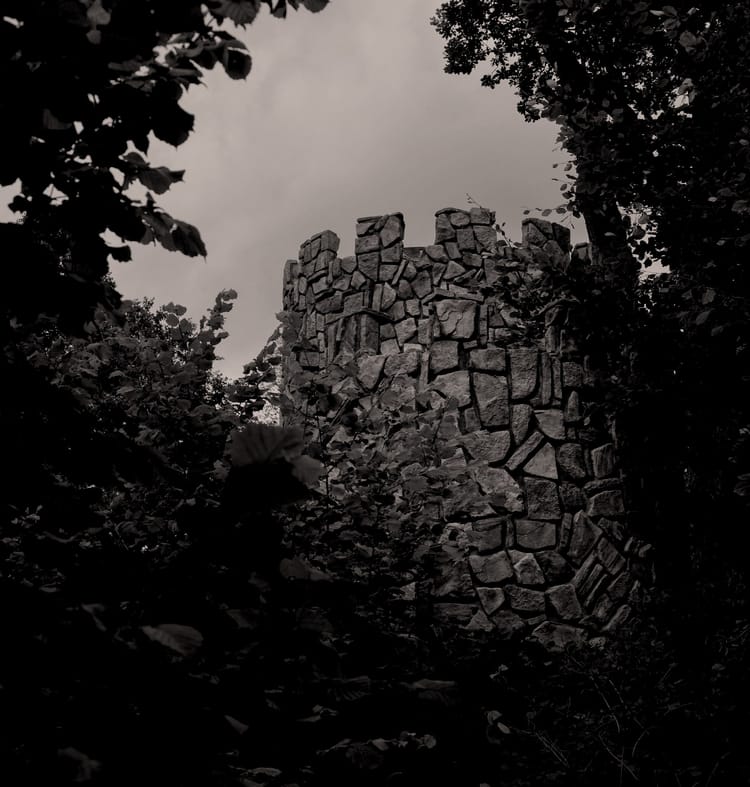
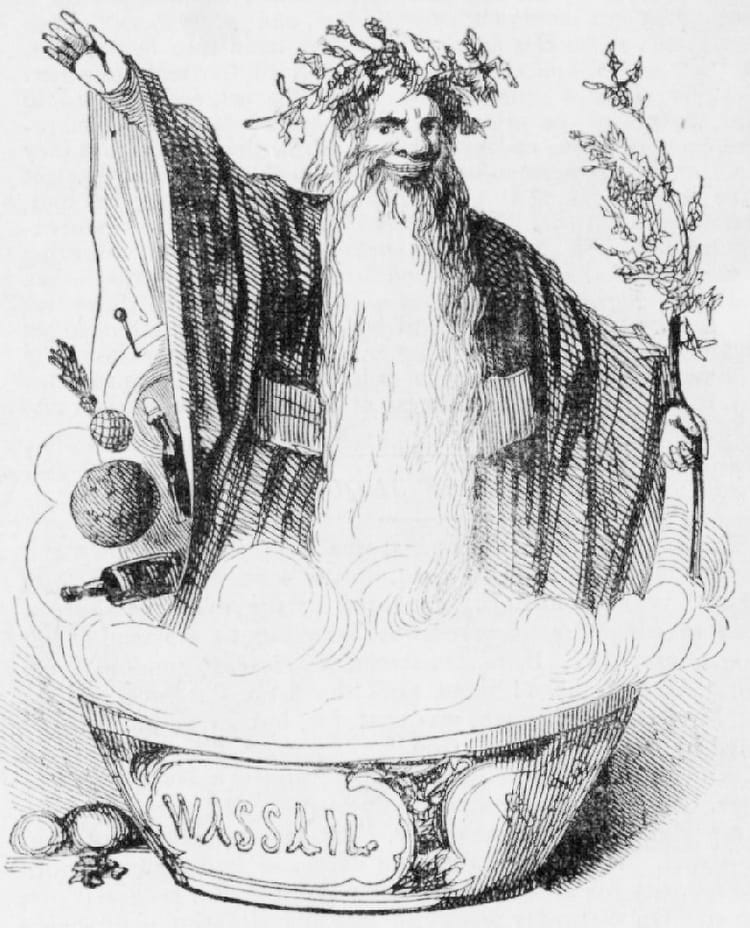
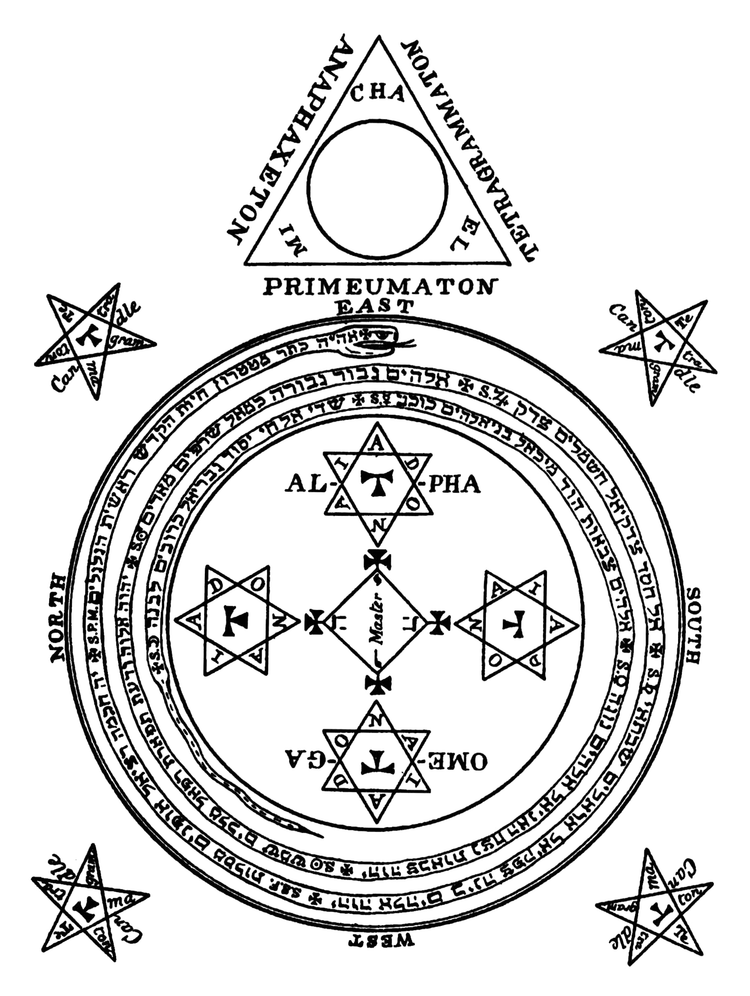

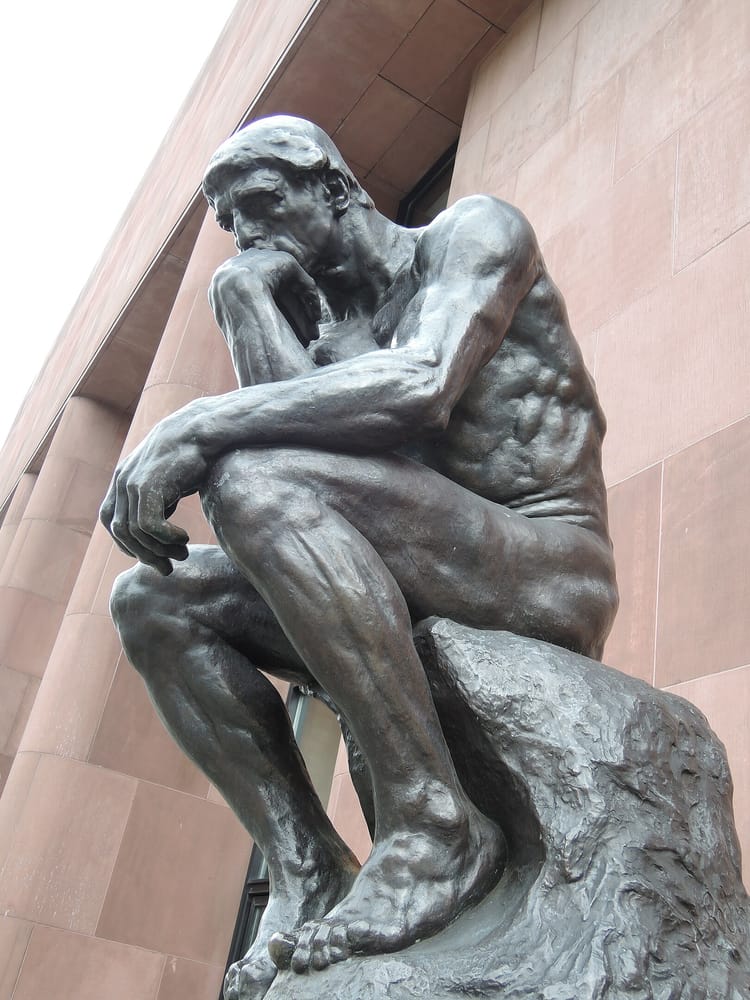
Member discussion